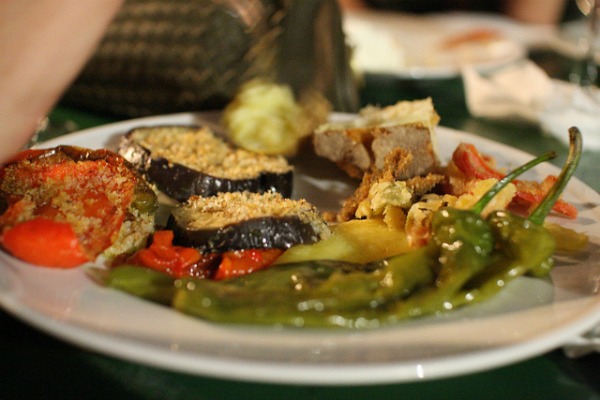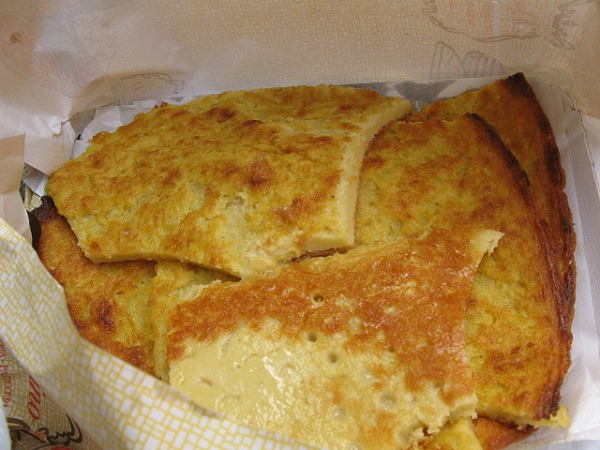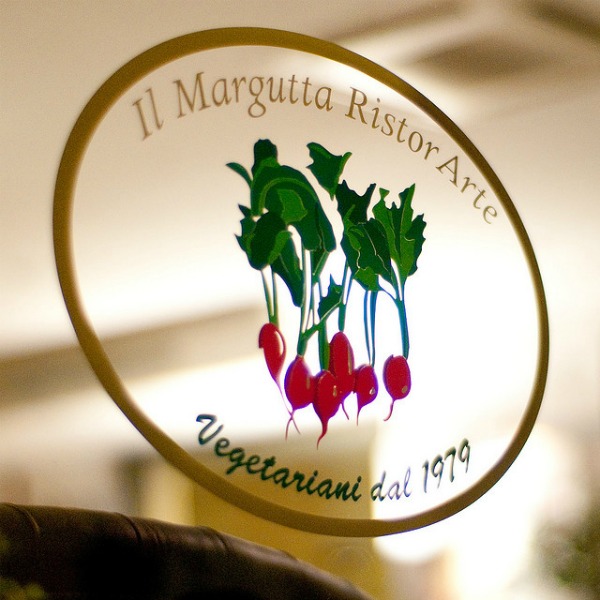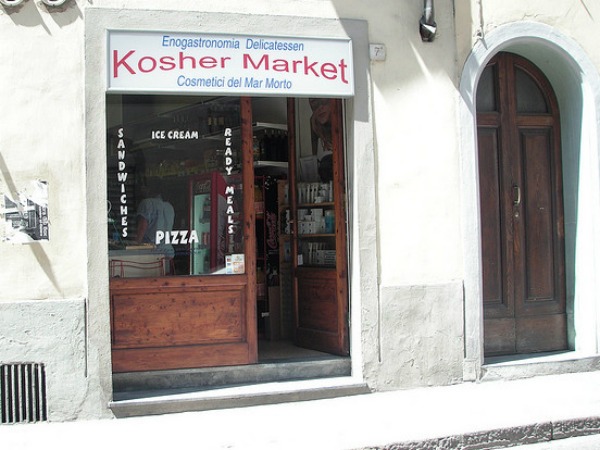Italy is famous for its food – so much so that eating in Italy is considered a tourist attraction by many people. If you’re someone with any sort of dietary restriction, however, dining out in Italy can be a challenge.
Here are some tips and resources to help you eat well in Italy without eating something you don’t want to.

Italian food can vary quite a bit by region and even by city, so with a little advance research you should be able to find out a few dishes that are common in each place you’ll visit for which you can learn the ingredients and know whether they fit your diet. Then it’s just a matter of finding that item on a menu. Luckily, most restaurants in Italy pride themselves on making traditional dishes in the traditional ways, so you aren’t likely to find two places serving radically different versions of the same typical dish.
Food is central to Italian life, and that’s both a good and bad thing when you’re a visitor who has a restrictive diet of any kind. The good news is that Italians want you to enjoy your dining experience, so they’re almost always eager to work with you to create something you’ll like. (I say “almost always” because a cook at a busy tourist restaurant is less likely to have time to tailor meals to individual diners.) The bad news is that if you don’t eat a certain food group for anything other than medical reasons, that doesn’t really compute. Italians have food allergies just like anyone else, but it’s a rare Italian who’ll voluntarily give up – for instance – meat or dairy. They may understand the phrase “I’m a vegetarian,” they just won’t necessarily get it.
What this means for the traveler in Italy is that the burden is on you to be as specific as possible about what you don’t eat, so as not to confuse the cook or waiter with a line like, “I’m a vegan.” Saying “I don’t eat meat” and “I don’t eat pork” is infinitely more helpful. Another tactic is to say that you “don’t digest” something instead of “don’t eat” something – Italians are obsessed with digestion, and if you tell them that (essentially) a certain food doesn’t agree with your gastro-intestinal system they’re much more sympathetic to a request to leave it out of your food.
Also note that booking a stay in an apartment or villa rental in Italy and then shopping and cooking for yourself is an excellent way to make sure you know exactly what’s going into your food.
Some great resources for traveling in Italy with special diets:
See below for tips about:

Traveling with a food allergy can be a little scary, when you don’t speak the language and can’t see what’s going into the preparation of the food you’re eating. Luckily, Italians are usually good at adapting dishes to meet a diner’s needs – they want you to enjoy the food you’re eating, and they’ve almost always got other options to work with.
Some allergies that are dangerous in the U.S. aren’t as much of an issue in Italy. Peanut allergies, for instance, aren’t really a problem in a country where you’ll have to work hard to even find a peanut.* Others – like a wheat allergy – are much tougher to manage in the land of pasta and pizza, although there are regional specialties (like farinata in Genoa, a flat bread made with chickpea flour – shown in the photo above) that are breads made without wheat.
Some food allergies are far more common in Italy than in the U.S. – an allergy to fava beans is one example, as they’re much more frequently used in Italian cooking than in most American dishes. For those of you who are lactose-intolerant, many gelato flavors are made without dairy of any kind, and some gelaterie even make flavors with rice or soy milk.
There are allergy translation cards you can get that will help you communicate any food (or other) allergies you have in any language – some have to be ordered and mailed to you, while others can be printed directly after purchase. If you’ve got a serious food allergy, be sure to talk with your doctor about anything you can take with you on your trip as well.
Some food allergy resources for Italy travel:
* Reader Alexandra commented below on the topic of nut allergies, and I wanted to make sure to post it up here so it wouldn’t be missed. She says that “if you are allergic to NUTS in general, there is no word for nuts in Italian. You need to list all nut types, which is not easy! Be conscious of local dishes made with nuts, like Pesto, which is made with pine nuts.”

Italians love their vegetables, so it may seem that vegetarian dining would be incredibly easy in Italy – and it can be. It can also be a bit of a challenge, since this is a culture in which “prosciutto” and other pork products aren’t always considered “meat.” You’ll regularly hear stories about vegetarians who tell an Italian chef they don’t eat meat, in perfect Italian which is understood without question, only to find out later that the vegetable soup they just ate was flavored with pancetta. That’s not the chef ignoring you, that’s the chef adding pork as a flavor ingredient and not serving you a steak because you “don’t eat meat.”
Remember what I said above about Italians not realling “getting it” when it comes to voluntary diet restrictions?
Vegetarians and vegans who are strict about not eating animal products need to be particularly careful about how they phrase things. Those who aren’t as bothered by meats used for flavor – so long as there aren’t big chunks of meat in the dish – will have an easier go of it. As is the case with food allergies, having a card with phrases translated on it detailing what you won’t eat can be helpful – because just saying you’re a vegetarian isn’t always enough. Some dishes are much less likely to include any animal products, so you can also research that in advance to know what to look for (or request) at restaurants.
Some vegetarian/vegan resources for Italy travel:

Italy is an overwhelmingly Catholic country, but larger cities often have significant enough populations of Jews and Muslims that Kosher and halal dining aren’t impossible. In parts of the country where there aren’t restaurants labeled as Kosher or halal, travelers can use the information about vegetarian dining listed above – and learn to be especially careful when asking about the inclusion of pork in dishes that sound like they’re all vegetables.
This is another instance where having a food allergy card (resources listed above) translated into Italian would be a very good idea.
Some religious diet resources for Italy travel:
I’m not a dietary expert, so chances are very good I’ve forgotten something here. If you have a great tip or resource for people traveling in Italy with a restrictive diet of any kind, please let me know!
photos, top to bottom, by: arvindgrover, ho visto nina volare, Joi, Fooding Around